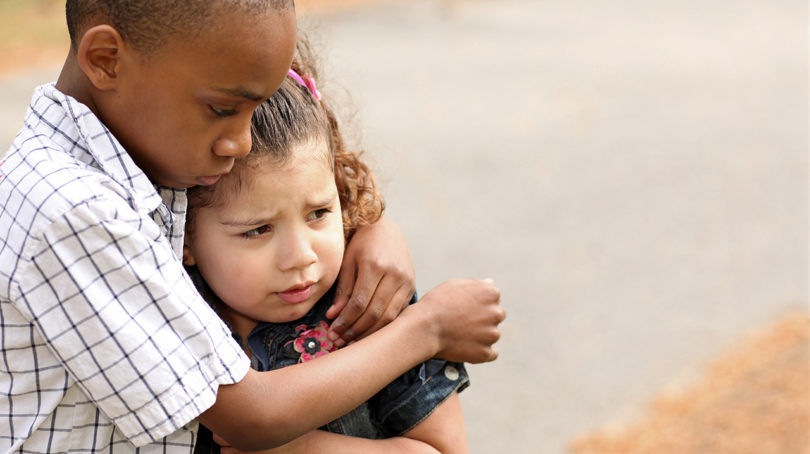We all want our kids to stand up for the little guy. But how do you foster compassion and empathy?

Photo: iStockphoto
One day at his after-school program, Sam Fleming noticed a bunch of kids clustered around the washroom, laughing and pointing at a young boy who had accidentally left the stall door open. Sam took action. He shut the door and stood in front of it to be sure the younger child could finish without being bothered.
When the staff told his mom about the incident, she was proud of him, but not surprised. She’s seen lots of other evidence that Sam, now 11, is a kind-hearted kid. “He’s kind to animals, too,” says the Peterborough, Ont., mother of two. “He’s a kid who wants to stop and protect turtles we spot crossing the highway.”
Call it compassion, empathy or plain old kindness: What could be more important than fostering this quality in our kids? Yet exactly how to go about it is not as obvious as teaching kids their ABCs or how to set the table.
Alysa Kim knows her ten-year-old daughter, Eveie, is an especially compassionate person, but when asked how she raised her that way, her initial reaction is to say, “We didn’t do anything, really. That’s just how she is. She has a good understanding of how people feel, and a desire to help them.” Only after a bit of thought did Kim realize it could be, at least in part, due to the family environment they’ve created. “It’s just little things,” she says. “We often give World Vision gifts and let the kids pick one for their teachers. And the way we act with each other and talk about things sets the expectation of kindness. I have a slogan I say a lot: ‘What’s our job? To love each other.’”
That’s exactly how it happens, says Mary Gordon, founder and president of Roots of Empathy, a classroom program that raises social and emotional understanding by giving kids an up-close relationship with a mother and baby from their community. Like so much of parenting, Gordon says, our teaching is largely by example, because “empathy is caught, not taught.”
So the key is to demonstrate empathy ourselves, starting with showing that we understand and care about our children’s feelings, and treating our partners and people outside the family with compassion. It’s also important to talk about our own emotions—not to overburden our kids, but to openly share normal feelings. “When you say, ‘I had a hard time at work today because I got really embarrassed during a presentation,’ that teaches your children a vocabulary of feelings and gives them a chance to exercise their own empathy,” she explains.
Compassion does come more easily to some children than others and when kids seem unconcerned about what others are going through, parents naturally worry. Temperament can be a factor; for example, the strong feelings of intense children can be overwhelming and leave little room for the feelings of others. And some kids have a harder time reading other peoples’ cues and may need extra help to develop a strong sense of empathy.
“There’s a practice element to this,” says Gordon.
Here are ways to help your child understand and show empathy: When reading or watching TV together, talk about how you identify with a character, and how she must feel. Coach him in caring for a younger child or pet. Point out the expressions and behaviour that tell us how the baby or animal is feeling. Share your pride and pleasure when he acts in a sensitive manner. Thank your child when she does something caring toward you, and share how it made you feel. Give him opportunities to make a social contribution, like being a reading buddy to a young child, or raising money for a charity. Help him find a cause that he can really care about.
A version of this article appeared in our February 2014 issue with the headline “Growing concern,” p 45.
FILED UNDER: Parenting School
Source link : https://www.todaysparent.com/family/parenting/kids-kindness-compassion












